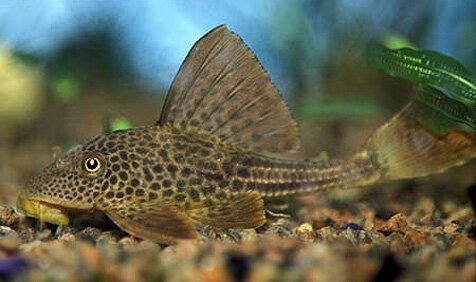Plecostomus
From Microcosm Aquarium Explorer

An almost bulletproof fish and ideal candidate for many freshwater aquarium communities. JJPhoto.dk
Overview
One of the quintessential aquarium fishes, the pleco is a good beginner’s catfish that will survive a wide range of water conditions.
Like other loricariid catfishes, the so-called "plecos" have bony plates instead of scales and a characteristic disk-shaped mouth that enables them to attach firmly to boulders in fast-flowing streams.
The original "Pleco" is Plecostomus hypostomus, but many other similar species are sold under the same name.
Family: Loricariidae
Other common name(s):
- Pleco
Native range:
Habitat: Prefers an aquarium with moderately dense vegetation and hiding places in the form of driftwood and inverted flowerpots to refuge in during the day. Acrylic tanks are not recommended, as the Pleco may scratch the panes with its mouth. It can be tough on plants, so use artificial plants instead of live. Unless there is heavy filtration and frequent water changes, the tank will be “adorned” with the long, stringy waste of this species.
Maximum length: 26 cm (10 in)
Minimum aquarium size: 114 L (30 gal)
Water: Freshwater 22 °C (72 °F) - 26 °C (79 °F)
General swimming level: Bottom
Feeding
Omnivore. The Pleco thrives on herbivorous foods, such as Spirulina flakes and sinking algae wafers, as well as well-rinsed Romaine lettuce and parboiled zucchini. Will relish an occasional feeding of meaty foods, such as bloodworms. Feed first thing in the morning and just after the lights are turned off.
Aquarium Compatibility
Although the Pleco may be territorial with its own kind, it is otherwise peaceful and can be kept in a community setting.
Breeding/Propagation
Known only in outdoor ponds, as these fishes make and occupy muddy tunnels in which to spawn.








